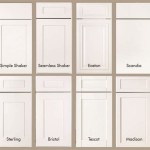How To Lay Laminate Floor Tiles In Kitchen
Laminate flooring offers a cost-effective and aesthetically pleasing alternative to traditional flooring options for kitchens. Its durability, ease of maintenance, and wide range of styles make it a popular choice for homeowners seeking to update their kitchen's look without undertaking a major renovation. While professional installation is always an option, laying laminate floor tiles is a manageable DIY project for homeowners with basic carpentry skills and a methodical approach. This article provides a comprehensive guide on how to successfully lay laminate floor tiles in a kitchen.
I. Preparation is Paramount: Assessing the Subfloor and Gathering Materials
The success of any laminate flooring installation hinges on thorough preparation. This involves carefully inspecting and preparing the subfloor, as well as gathering all the necessary tools and materials. Neglecting these initial steps can lead to uneven flooring, warping, and ultimately, a failed installation.
A. Subfloor Inspection and Preparation:
The subfloor is the foundation upon which the laminate flooring will rest. It must be clean, level, dry, and structurally sound. Any imperfections in the subfloor will telegraph through the laminate, creating an uneven and potentially unstable surface.
1. Cleanliness: Remove all debris, including dust, dirt, grease, and old adhesive. Sweep or vacuum the subfloor thoroughly. For stubborn stains, use a degreaser or appropriate cleaning solution recommended for the subfloor material (e.g., concrete cleaner for concrete subfloors). Allow the subfloor to dry completely before proceeding.
2. Levelness: Use a long level (at least 6 feet) to identify any high or low spots in the subfloor. Significant variations in levelness (more than 3/16 inch over a 10-foot span) need to be addressed. High spots can be ground down using a concrete grinder or belt sander (depending on the subfloor material). Low spots can be filled in with a self-leveling compound. Follow the manufacturer's instructions for the self-leveling compound and allow it to cure completely before proceeding. Alternatively, shims can be used under the underlayment to level small dips.
3. Dryness: Laminate flooring is susceptible to moisture damage. To ensure the subfloor is dry, conduct a moisture test. For concrete subfloors, a calcium chloride test measures the rate of moisture vapor emission. For wood subfloors, a moisture meter can measure the moisture content of the wood. The acceptable moisture levels will be specified in the laminate flooring manufacturer's instructions. If the subfloor is too damp, identify and address the source of the moisture before installing the laminate. A vapor barrier is typically required over concrete subfloors.
4. Structural Soundness: Inspect the subfloor for any signs of damage, such as cracks, rot, or loose boards. Repair any damage before proceeding. Cracks in concrete can be filled with a concrete patching compound. Rotted or damaged wood should be replaced. Secure any loose boards or plywood sheets with screws.
B. Gathering Tools and Materials:
Having all the necessary tools and materials on hand before starting the installation will save time and frustration. This list may vary slightly depending on the specific type of laminate flooring being used, but generally includes:
1. Laminate Flooring Tiles: Purchase enough tiles to cover the entire kitchen area, plus an additional 5-10% for waste due to cuts and errors. Ensure the tiles are acclimated to the kitchen's temperature and humidity for at least 48 hours before installation. This allows the tiles to expand or contract, preventing buckling or gaps after installation.
2. Underlayment: Underlayment provides a cushioning layer between the subfloor and the laminate flooring. It helps to reduce noise, insulate the floor, and protect the laminate from moisture. Choose an underlayment that is compatible with the type of laminate flooring being used and the subfloor material. Some laminate flooring products come with an attached underlayment. Otherwise, a separate underlayment with a vapor barrier is recommended.
3. Measuring Tools: A tape measure is essential for accurately measuring the kitchen's dimensions and determining the placement of the tiles. A square or combination square will help to ensure accurate cuts. A chalk line or laser level can be used to create straight lines for aligning the tiles.
4. Cutting Tools: A laminate flooring cutter or a jigsaw with a fine-tooth blade is needed to cut the tiles to size. A utility knife can be used to score the tiles for easier snapping. Safety glasses should always be worn when cutting laminate flooring.
5. Tapping Block and Pull Bar: A tapping block and pull bar are used to securely connect the tiles together without damaging the edges. The tapping block is used to gently tap the tiles into place, while the pull bar is used to pull the last row of tiles tight against the wall.
6. Spacers: Spacers are used to maintain a consistent expansion gap around the perimeter of the room. This gap allows the laminate flooring to expand and contract with changes in temperature and humidity, preventing buckling.
7. Other Tools and Materials: A hammer, pencil, safety glasses, dust mask, painter's tape (to secure the vapor barrier), and transition strips (to transition to other flooring types) are also necessary.
II. Installation Process: From Layout to Final Touches
Once the subfloor is properly prepared and all the necessary tools and materials are gathered, the installation process can begin. This involves carefully laying out the tiles, cutting them to size, and securely connecting them together.
A. Planning the Layout:
Before starting the installation, take the time to plan the layout of the tiles. This will help to minimize waste and ensure a visually appealing result.
1. Determine the Starting Point: Ideally, begin laying the tiles along the longest straight wall in the kitchen. This will help to ensure that the rows are straight and parallel. If the longest wall is not straight, establish a straight reference line using a chalk line or laser level.
2. Calculate the Number of Rows: Measure the width of the room and divide it by the width of a tile to determine the number of rows needed. If the last row will be less than half a tile wide, adjust the starting row so that both the first and last rows are at least half a tile wide. This will create a more balanced look.
3. Stagger the Seams: Stagger the seams between the rows to create a more visually appealing and structurally sound floor. A common practice is to start each new row with the offcut from the previous row, provided it is long enough (usually at least 6 inches). This minimizes waste and creates a random pattern.
B. Installing the Underlayment:
If a separate underlayment is being used, install it according to the manufacturer's instructions. Typically, the underlayment is rolled out in strips, overlapping the edges slightly. Secure the edges with painter's tape to prevent them from shifting during installation. If the underlayment includes a vapor barrier, ensure that the seams are properly sealed to prevent moisture from penetrating the laminate flooring.
C. Laying the First Row:
Begin laying the first row of tiles along the starting wall, leaving an expansion gap of approximately 1/4 inch between the tiles and the wall. Use spacers to maintain a consistent gap. Connect the tiles together according to the manufacturer's instructions. Most laminate flooring uses a tongue-and-groove system that allows the tiles to snap together. Use a tapping block and hammer to gently tap the tiles into place, ensuring a tight and secure connection.
D. Continuing the Installation:
Continue laying the tiles row by row, staggering the seams and maintaining the expansion gap around the perimeter of the room. Use the tapping block and pull bar to ensure that the tiles are securely connected. When working around obstacles such as pipes or cabinets, carefully measure and cut the tiles to fit. A jigsaw with a fine-tooth blade is ideal for making intricate cuts.
E. Cutting the Last Row:
When you reach the last row of tiles, you will likely need to cut them to fit. Measure the distance between the last row of tiles and the wall, taking into account the expansion gap. Use a laminate flooring cutter or jigsaw to cut the tiles to the correct size. Use the pull bar to pull the last row of tiles tight against the wall.
III. Finishing Touches: Trimming and Transitioning
Once the laminate flooring is installed, the final step is to trim the edges and install transition strips. This will give the floor a finished and professional look.
A. Removing Spacers and Installing Baseboards:
Remove the spacers from around the perimeter of the room. Install baseboards to cover the expansion gap and give the room a finished look. The baseboards should be nailed or screwed into the wall studs, not into the laminate flooring.
B. Installing Transition Strips:
Install transition strips where the laminate flooring meets other flooring types, such as carpet, tile, or hardwood. Transition strips provide a smooth and safe transition between the different flooring surfaces and help to protect the edges of the laminate flooring. Choose transition strips that are compatible with the thickness of the laminate flooring and the adjacent flooring.
C. Cleaning the Floor:
Clean the floor with a damp mop and a mild detergent specifically designed for laminate flooring. Avoid using excessive water, as this can damage the laminate. Dry the floor thoroughly after cleaning.
By following these steps, homeowners can successfully lay laminate floor tiles in their kitchen, creating a beautiful and durable flooring surface that will last for years to come. Remember to always consult the manufacturer's instructions for specific recommendations and guidelines for the particular laminate flooring product being used.

Installing Laminate Tile Flooring Diy Instructions

Tips For Installing A Kitchen Vinyl Tile Floor Merrypad

Top 50 Best Kitchen Floor Tile Ideas Flooring Designs Modern House Design

Dream Home 8mm Twilight Villa Stone W Pad Waterproof Laminate Flooring 15 52 In Wide X 47 Long Ll Formerly Lumber Liquidators

6 Tips For Mixing And Matching Floor Styles Kitchen Flooring Stylish

Installing Laminate Tile Flooring Diy Instructions

Tile Flooring Vs Laminate I Tiles Diy

Lay The Floor Or Fit Kitchen First Diy Kitchens Advice
Is It Ok To Put Laminate Flooring In A Kitchen Quora

Can I Install Laminate Floors On Ceramic Tiles The Carpet Guys
Related Posts








